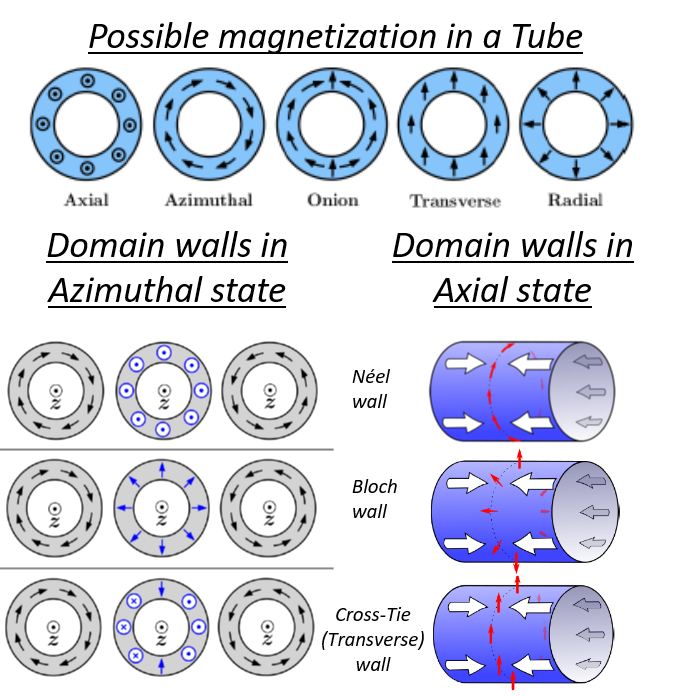Magnetic nanotubes for new generation of domain wall conduits at unprecedented mobility.
- Abstract number
- 561
- Event
- European Microscopy Congress 2020
- DOI
- 10.22443/rms.emc2020.561
- Corresponding Email
- [email protected]
- Session
- PSA.9 - Magnetic and Spintronic Materials
- Authors
- M Mahdi Jaber (4, 8), Dr Aurélien Masseboeuf (4, 9), Dr Olivier Fruchart (4, 9), Dr Jerome Hurst (4, 9), Dr Daria Gusakova (4, 9), Dr Dhananjay Tiwari (4, 9), Dr Christophe Thirion (3, 9), Dr Christophe Gatel (2, 10), Dr Sascha Schaëfer (7), Dr Rachid Belkhou (6), Dr Andrea Locatelli (5), Dr Michal Staňo (1), Dr Laurent Cagnon (3)
- Affiliations
-
1. CEITEC
2. CNRS CEMES
3. CNRS Institut Néel
4. CNRS Spintec
5. Elettra
6. SOLEIL
7. TU Darmstadt
8. CEA IRIG
9. UGA
10. Université de Toulouse III
- Keywords
Electron Holography
Domain wall motion
Spintronic
In situ
- Abstract text
Magnetic nanotubes are expected to host magnetic domain walls different from those for flat films and filled cylindrical structures. Compared to cylindrical nanowires, reports on magnetism of isolated metallic nanotubes are very few and so far no material has given rise to well defined magnetic domains1. Here we report on the characterization using various TEM techniques including in-situ Electron Holography, of high-aspect ratio CoNiB nanotubes grown by electroless plating inside a porous template combined to annealing for a growth induced anisotropy manipulation2.
Through direct imaging, we evidenced multiple magnetic domains and domain wall configuration in these nanotubes, using electron and photons probes. Surprisingly, some of the experiment revealed orthoradial magnetization in the domains (azimuthal i.e. vortex-like), a situation not anticipated by theory and some exhibit variation around a main magnetization along the tubes. The integration problem that occurs in Transmission techniques such as TEM requires an intense image treatment (for accessing at least a proper understanding of the different layers encountered by the electron beam i.e. top & bottom surfaces of the tube) and micromagnetic simulations to determine the real magnetic structure of these objects, along with their magnetic history and their evolution under applied magnetic field.
Such material are appealing for 3D magnetic device such as the racetrack memory (based on shifting magnetic walls), as flux-closure domains should efficiently prevent cross-talk related to internal dipolar fields. Moreover, magnetic domain wall velocities as high as kilometer per second3 are envisaged for such original structures well above the Walker breakdown limit in most 1D magnetic conduits.
Figure : various possible magnetization states in magnetic nanotubes and more favourable domain wall structure for 2 considered magnetization configurations : azimuthal and axial.
- References
[1] Streubel, R. et al. Magnetism in curved geometries. J. Phys. Appl. Phys. 49 (2016), p 363001.
[2] Staňo, M. et al. Imaging magnetic flux-closure domains and domain walls in electroless-deposited CoNiB nanotubes. SciPost Phys. 5 (2018) p 038.
[3] Hertel, R. Ultrafast domain wall dynamics in magnetic nanotubes and nanowires. J. Phys. Condens. Matter 28 (2016), p 483002.

